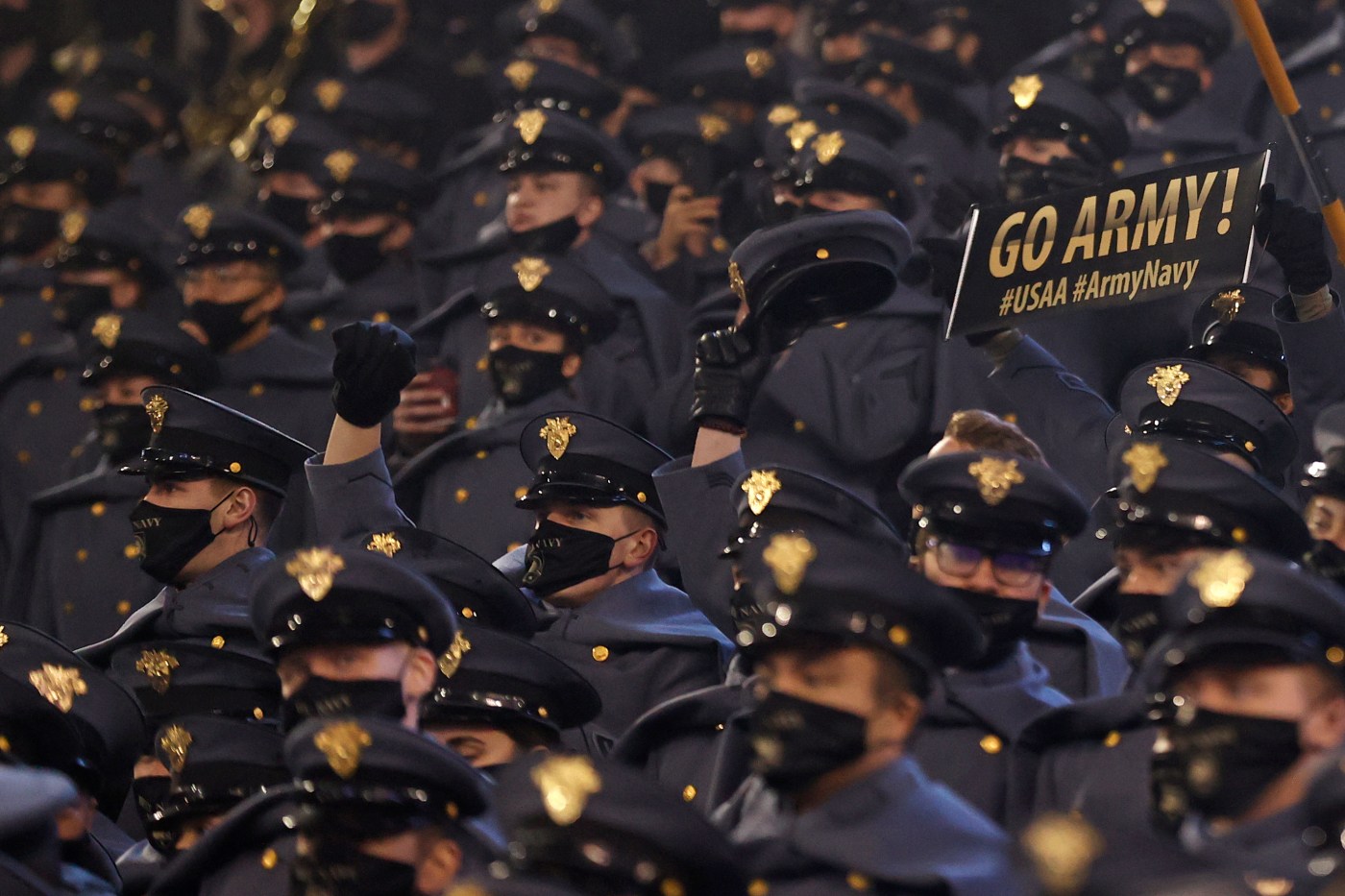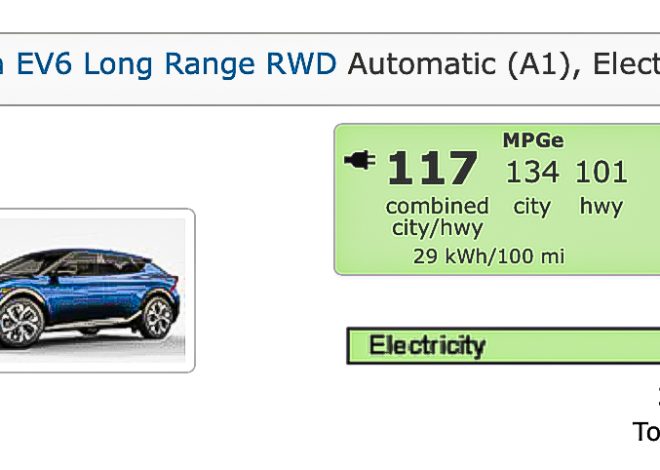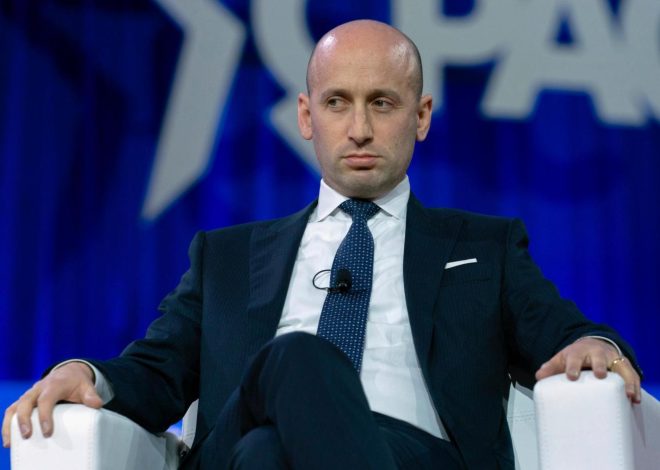
Mailbag: Big 12 threat level (in the CFP), Wilcox’s future, Washington’s QB plans, Pac-12 expansion, my AP ballot and more
The Hotline mailbag publishes weekly. Send questions to [email protected] and include ‘mailbag’ in the subject line. Or hit me on the social media platform X: @WilnerHotline
Please note: Some questions have been edited for clarity and brevity.
On a 1-to-5 scale, where is Big 12 commissioner Brett Yormark’s concern level about losing an automatic bid to the College Football Playoff when the Army/Navy game happens? There’s a lot of football still to be played, but both service academies play Notre Dame. If one or both beat the Irish … — @kingcoug56
My hunch is Yormark has, at most, mild concern about the state of play regarding the CFP selection and seeding outlook. But the new system is confusing for fans, so let’s address the format first, then the specifics of the Big 12 situation relative to the Group of Five, which, of course, includes the academies.
The 12-team event includes five automatic bids that are assigned to the five highest-ranked conference champions. The rules don’t distinguish between the Power Four and the Group of Five conferences, but the presumption is the Power Four winners would claim four of the five bids, with one left for the highest-ranked team in the Group of Five.
There is one way for the Big 12 to be excluded from the automatic bid process altogether: If the conference champion is ranked behind the winners of the ACC, Big Ten, SEC and two Group of Five leagues.
If the Big 12 champ has three losses, Boise State is 12-1 and either Army or Navy is 13-0, then the Big 12 would be at risk of getting shut out.
However, that scenario is extremely unlikely — to the point that it’s not worth further discussion here.
But there’s a second piece to the puzzle: The seeding hierarchy. And in that regard, the Big 12’s risk is worth addressing.
We explained that the five highest-ranked conference champions receive automatic bids, and the seeding process works in similar fashion. The four highest-ranked conference champions will be assigned the top-four seeds in the CFP, which provides them a bye into the quarterfinals. (The fifth champion/automatic qualifier isn’t as fortunate and will have to play in the opening round.)
There’s a perfectly plausible scenario in which the Big 12 (or ACC) winner is ranked behind the top Group of Five team.
That would require the Big 12 champ to finish with at least two losses and either:
— Boise State runs the table to finish as the 12-1 winner of the Mountain West with a three-point loss at Oregon; or
— Army or Navy beats Notre Dame, wins the American Athletic Conference title and finishes undefeated.
In either case, the Big 12 winner could be at risk for a lower ranking than Boise State or Army/Navy. It’s unlikely, but it’s possible.
One last point: The Army-Navy game is one week after both the AAC championship and the CFP selection announcement. The committee would base its decision on the outcome of the AAC matchup and not wait for the traditional Army-Navy rivalry to be played.
The Hotline’s official position on the matter is this: The more chaos caused to the process by Army and Navy, the better.
But regarding the Big 12 winner not receiving an automatic bid because it’s ranked behind the ACC, Big Ten SEC, Mountain West and AAC champions, that outcome is extraordinarily unlikely.
Is it time (or past time) for Cal to seriously think about moving on from Justin Wilcox? No one expected this team to start 7-0, but the Bears easily could be undefeated. Instead, they look frustratingly familiar (i.e., mediocre). What is a reasonable path forward in your view? — @herzog_eric
Four thoughts on the Wilcox situation:
— The Bears (3-4) have five games left and could easily become bowl-eligible for the second consecutive season, which is no small accomplishment for the program.
— Wilcox is under contract through the 2027 season at roughly $4.5 million annually, so the buyout is probably more than Cal can afford. (Note: Cal cannot afford a ham sandwich.)
— Anyone who believes the Bears should be winning eight or more games consistently in this environment — with the ACC transition and the transfer portal and NIL and everything else — is, in our humble opinion, delusional.
— Anyone who believes the candidate pool would be filled with coaches who can win eight or nine games is also delusional.
We understand the frustration. The Bears have lost four games by nine points and missed key field goals in three of the four.
But they just went bowling, have won three in a row against Stanford and are relevant enough to have hosted ESPN’s ‘College GameDay’ show.
Let’s pump the brakes and examine the situation in detail after the regular season.
Am I the only person who thinks Washington’s quarterback substitutions are bizarre? I understand putting a QB in for a whole series or a specific purpose (e.g., if he’s a better runner in a running down). But momentum-killing, single-snap substitutions on important drives like what coach Jedd Fisch is doing seems macabre. — Joe
Preach, Joe. Preach.
The Hotline is forever mystified that head coaches — not just Fisch; plenty of others are guilty, as well — believe it’s smart to pull the starting quarterback during a successful possession.
We see it time and again: Team A collects a series of first downs, enters the Red Zone, then swaps out the starting quarterback for a backup who offers a different skill set. Or maybe it’s not even the backup. Sometimes, teams insert a running back and use the Wildcat formation.
Often, the subsequent snap is mishandled. Or there’s a botched exchange. Or the opponent knows exactly what’s coming and the play gets stuffed and the momentum is gone.
It happens every week — every game, in fact.
With regard to Washington’s situation specifically, there is a role in the offense for Demond Williams.
He’s extremely talented and provides an impactful change of pace and Fisch is undoubtedly sensitive to keeping him happy. But the Huskies should be careful about pulling starter Will Rogers.
How much is the Pac-12 paying for the five Mountain West schools, and it is really worth it? If the number is as big as assumed, then would it not be better to spend the money to be competitive nationally in other ways? — @birflr
I am not entirely sure what you mean by spending the money “to be competitive nationally in other ways” given that Washington State and Oregon State must be members of an eight-team conference (minimum) by the summer of 2026.
They had three choices:
1. Join the Mountain West.
2. Welcome the entire Mountain West into the Pac-12 in a reverse merger.
3. Partner with the top football schools in the Mountain West to create a smaller Pac-12.
They opted for No. 3, largely because of financial and competitive value. The Pac-12’s future media rights and postseason revenue won’t be shared with schools at the low end of the Mountain West food chain. Fewer mouths to feed mean bigger portions.
Also, we’re skeptical that the Pac-12 could have gotten Gonzaga to join a conference that had 12 or 14 members.
In terms of the cost, here’s what we know:
The poaching penalty in the contract between the Pac-12 and Mountain West requires the former to pay the latter about $55 million for the five schools (Boise State, Colorado State, Fresno State, San Diego State State and Utah State).
What we don’t know:
If the Pac-12’s lawsuit against the Mountain West, which claims the poaching penalty is illegal, will hammer that $55 million down to $40 million, $20 million or nothing at all.
The answer to the question, ‘How much is the Pac-12 paying’ won’t be answered for many, many months.
Do you think Fox analyst Petros Papadakis’ suggestion that the Pac-12 offer membership to Incarnate Word is something that should be looked into? He mentioned it when they were discussing where the Pac-12 could find another football-playing school. — David U
Incarnate Word is a member of the Southland Conference and a high-level FCS program. It produced Cam Ward, the former WSU and current Miami quarterback, and has recently been the proving ground for G.J. Kinne, the current Texas State coach, and Eric Morris, the North Texas coach. Also, it’s located in San Antonio, a large media market in a football-crazed state.
If the Pac-12 dips into the FCS level for the eighth football-playing member, then Incarnate Word should be on the short list of candidates (with Sacramento State and perhaps a few others).
But the conference might pursue other options for the final membership spot(s). For example, why take Incarnate Word, from the Southland, if Texas State, from the Sun Belt, is willing and available?
Texas State would seem like the easy call in that situation.
Timeline for a Pac-12 media deal? — @TonyOnly_
The process could take a few more weeks or it could take months.
But we know this: The more layers involved, the more time required for media rights contracts to be completed.
And the Pac-12 is likely to have several layers.
It will be a new deal, not the extension of an existing arrangement.
It likely will have both linear and streaming components.
And it will probably feature multiple media companies.
Those factors alone suggest it could be later than sooner.
Are the American Athletics Conference schools still on the list for the eighth football team in the new Pac-12, or has that possibility expired? — @DonaldFarmer65
No options have expired. Anything previously reported (here or elsewhere) remains a possibility if the Pac-12 is willing to make the right offer and the targeted school(s) is open to the idea.
Related Articles
Analysis: One former Pac-12 school is excelling. Why are the majority struggling so much?
WSU’s path to CFP: Cougars need help from Texas Tech, Boise State, UW
Post-Pac-12 After Dark, ESPN’s 7:30 p.m. ratings slip
CFB Week 9 picks ATS: Colorado and UW win, Vandy covers, down goes BYU
Holy Score: BYU remains unbeaten while Utah’s woes prompt OC change
Memphis athletic director Ed Scott essentially said as much last month when he declared (to paraphrase):
If they come back with a better offer, we’ll listen.
The same is true of UNLV. Until the Mountain West has a media rights deal in place, anything’s possible.
There are no rules in realignment.
That said, the Pac-12 is being careful with its cash and won’t add teams simply to add teams — over and above the one member required to meet the NCAA’s criteria.
Why is your ballot so far out of alignment with the rest of the Associated Press Top 25 voters? — @alcor805
I have no idea whether it’s out of alignment with other ballots or the degree to which it might be.
I have been voting in the AP poll for decades and generally followed the same approach.
After the games are completed late Saturday night, I put together and submit my ballot. The process can take 10 minutes or 30 minutes, depending on the nature of the results and the point of the season.
But once the submission process is complete, that’s it. I don’t track which teams are ranked where unless I need the information for an article. And I certainly don’t compare my ballot to others, although I’m aware of the websites that provide comparisons and deviations.
My approach is generally to emphasize the quality of opponents and location.
Losing a close game to an A-level opponent is more impressive, in my opinion, than beating a creampuff by 30.
I often will leave teams unchanged from one week to the next after a loss.
Occasionally, I’ll move teams up after a loss.
But my approach is simply one of 61. There are plenty of voters who craft their ballots based largely or entirely on the number of losses.
I have never subscribed to that method, and the AP keeps inviting me back.
*** Send suggestions, comments and tips (confidentiality guaranteed) to [email protected] or call 408-920-5716
*** Follow me on the social media platform X: @WilnerHotline


